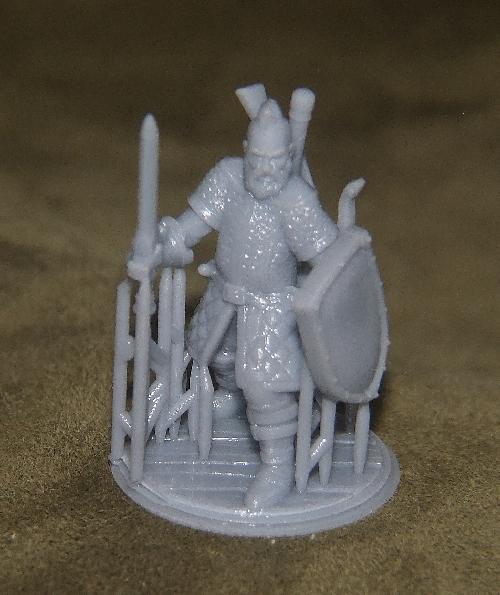-
Posts
5,928 -
Joined
Content Type
Profiles
Forums
Events
Blogs
Gallery
Everything posted by fredk
-
Have you ever heard of the 'Silk Road'? it was the way, the routes, used by the ancient Chinese to export silk, tea and other goods to the Middle East, where European traders bought them, then got the goods to old Europe and even to the American colonies About 2010/2012 the Chinese started the 'Silk Train'. Its a very long train, much longer than even US or Australian trains. It travels from China across upper Asia through Russia, through Poland and on to Belgium. It brings goods from China directly to Europe. This train has some unusual features. It has cars dedicated to ebay sales (and other on-line sites). Using modern technology, whenever a sale is made of certain popular products the sales info is sent to the train car where an operative picks the pre-packaged item, prints out the address label and drops the package into the mail bag. These are off-loaded at certain intervals. One reason the Chinese sellers do not offer combined postage on certain items A Silk Train leaves China every day of the week. It takes roughly 8 to 12 days for it to arrive in Belgium. It travels fairly slowly and is self-contained I was informed of all this by a friend who worked in European Customs and was part of the EU team who worked on the system to make it work, that is, getting through EU customs Anyone who knows of the UK's Royal Mail travelling postal sorting office night trains will know that this Chinese Silk Train can do this Very old film of the TPO Night Train, but afaik they still run, they certainly did when I was a Postie - I did a few shifts on them
-
One other thing I'd like to add; check the seller's address. Several times I've bought more than a few items from different China sellers. Bought within about 5 days. All the items came in one package from one address. I did some checking and I don't yet know if one seller is using several business names or several businesses are based in one office block. Thanks to Google maps I was able to get views of those business addresses and saw they were large buildings with many floors. Thus when I'm buying from a new to me seller I sometimes check the address to see if they are associated with others. Sometimes it has turned out an associated seller has the same item at a different price
-
The other evening I once again came across a major down-side of using brass-only rivets I spilt a box of of over 100 small, 6mm head size, rivets across the floor. Of course I couldn't use a magnet to collect them up - down on my knees picking them up by ones & twos, looking in nooks & crannies for hiding heads or tails!
-
I don't know the seller asked about but may I say ; I have no real other option BUT to buy a lot of supplies out of China. I often buy as cheap* as I can because if I get garbage I've not wasted too much money, plus I buy through ebay & paypal so I can get refunds easily. Other than the odd China seller I regularly use about 6 Chinese sellers. So far no problems with quality and currently items take about 10 to 15 days to reach me (by comparison, items from GB are taking 7 to 10 days to reach me) I would buy locally if the item was made locally, but its usually imported from China and the price is higher (thats business) I'd say weigh up the cost/quality with anything you can get locally. If the things are made locally and are of equal or better quality give your money to them. Otherwise don't fear the Chinaman. And, does that one you are asking about take payment by paypal or credit card? With paypal its quite easy to get refunds, you can get refunds thru your credit card but the limit is higher and its harder * eg, shopping around on ebay I found a French skiver and bought it for £5.80, other Chinese and UK sellers had the same item (they use the same photo and word description verbatim) priced up to over £25. The skiver is excellent and sharp enough to use as it came waffle mode off
-
A thought; Use the Kydex as a liner. Laminate between two thin leathers, or one thick-ish outside leather for tooling and a very thin leather on the inside to protect the weapon from abrasion
-
Welding stainless steel needs an extremely hot weld. I used to have to turn my MiG welder full up just to get a small tack weld on a car exhaust Can you buy the chains ready made up?
-
umm. no, just low grade ferrous metal is magnetic. Stainless steel has very little attraction to magnetism. Other metals are not magnetic
-
The only explanation I think I can come with; (Its my theory because it belongs to me) is that there was some sort of ferrous salts used in the tanning. All that leather has a small amount of it through the leather but its only this small sheath because it is so light weight that the magnetism is strong enough to hold it. The bigger sheath would stick as well but its weight overcomes the magnetic grip edit to add; I just had an idea. Have you got a university or senior college near you? Take it to their science section get them to investigate it. It might interest them to do so and students can learn testing & analysis by doing so
-
That is verily mostest unusual
-
@Temptations If you are using pre-dyed you won't need any sealer, just a waterproofer. A beeswax & carnauba wax mix or Snow Proof. The wax mix could also be used to smooth down the flesh side https://www.tandyleather.world/products/fiebing-snow-proof-paste-3oz?_pos=1&_sid=6237f3b36&_ss=r
-
Not dyeing? This would be my way cut strap dampen leather and bevel edges, punch holes for fittings, skive area where buckle will fit dye seal dye with thinned resolene, thinned Pledge 'Floor Polish' or one of my magic mixes Rub in my beeswax/nfo mix. On front to polish, use it on edges to slick and on the back to smooth that put fittings on maybe, a couple of days later, rub in and buff more beeswax mix
-
I would use contact adhesive, but also drill a small hole at each end of the spring clip and fit a brightly coloured ready-rivet. Fit the rivet so the head is part of a coloured pattern on the wings. Other than the usual colours you can get rivets with coloured heads. I have them in several colours such as red, pink, blue, green
-
A card & string bought-in price tag for items that can take a tied on one. A low tack sticky back label for items that can't take a tied on one
-

Pre-Cut Leathers or Full Sides (Or Hides)
fredk replied to TanneryNYC's topic in Marketing and Advertising
There is a certain amount of wet moulding needed on these steering wheels. And a certain amount of shrinking the leather in place -
Sounds like it was 'hard'water. Have you tried washing it down with a mild dilute distilled vinegar / water solution?
-
example https://www.tandyleather.world/products/solid-brass-double-cap-rivets-100-pack?variant=32642873000071
-
Superglue on a cotton bud or cotton ball will actually ignite On one of those 'hacks' on youtube a foreign chappie showed how to light a fire with a cotton bud and superglue. In case you are out in the wilderness and need to light a fire I would think that if you are out in the wilderness you'd not have superglue with you but better fire lighting equipment, like matches, a cigarette/ pipe lighter or even an iron fire striker. If not, you deserve to die and be eaten by dingoes / vultures / crows / hyenas / rats
-
So that last blade, what we call a 'Stanley' knife blade, is of reasonable sharpness straight from the box?
-
Simple check; take a magnet to them. I have never had nickle plate on brass tarnish but I've had nickle plate on steel showing corrosion, the corrosion of the steel coming through. I only use plated brass or unplated brass now I think they may very slightly stronger. The head over the base keeps that base from pulling through too easily, or easier than without the head cover. But the double header is far nicer in appearance and useful. I only use double headers now, just very occasionally single headers in a very small size
-
Many questions; are they nickel on steel? are they tarnishing before use or after use? what way are they stored unused or when used?
-
I've used superglue on leather; to stick tag ends of sewn thread down. Any excess superglue soaked right into the leather and dried very quickly. It dried very hard. I doubt any machine sewing needle would be able to get through it I once tried superglue on its own and also mixed with talc powder as a filler on some edges, to seal them before waxing and burnishing. The superglue dried extremely hard and stiffened the edges far too much. I had to cut away the edges
-
I guess the starting slow would be a bonus on a sewing machine. I like to go slow on mine but the foot controllers just go from slow to fast too easily and quickly. I suppose I just need to sort that out
-

Pre-Cut Leathers or Full Sides (Or Hides)
fredk replied to TanneryNYC's topic in Marketing and Advertising
I prefer a full hide, or full half. As I make small goods I can get useable pieces out of the naturally squiggly belly edge or the sticky out bit where the legs were White, bright yellow, bright blue, bright green, bright red, bright orange in various thicknesses, from 1mm (2 oz?) mm to 4mm (10 oz?) mostly and did I mention WHITE I have an old order to recover car steering wheels. The customer would like to have them done in bright coloured leather. I've been sitting on that order since 2014 now. I think he has 350 to 400 steering wheels he wants me to do but I just cannot get the bright coloured leather in pre-dyed veg tan. When I try to dye it always turns out very dark -
there speaks experience edit; I've just asked for some of this thread chat to be separated off as it has drifted so far from the OP's question
-
You can get filament and liquid resin printers. I have a resin printer. The resin costs about $25 for a 1kg bottle This figure is 28mm tall. It used 5p of resin, about 6c? Even if the whole bottle of resin were to be used that would be $25 or £30 (resin is dearer here). But at a guestimate only about 1/3 of a bottle would be used. The main price is in the scanning and making the computer file Doc says a blue gun is $50. Bunkhouse Tools sells resin cast SAA type guns for $36 - https://bunkhousetools.com/shop-1/ols/products/colt-xn-45-sa-5-1-2-barrel-xs9j It would cost another $30 to ship it to me if I wanted one Once you have the printer file you can print off as many copies as you want. You could sell surplus copies. (And within the computer file you can resize the object)



